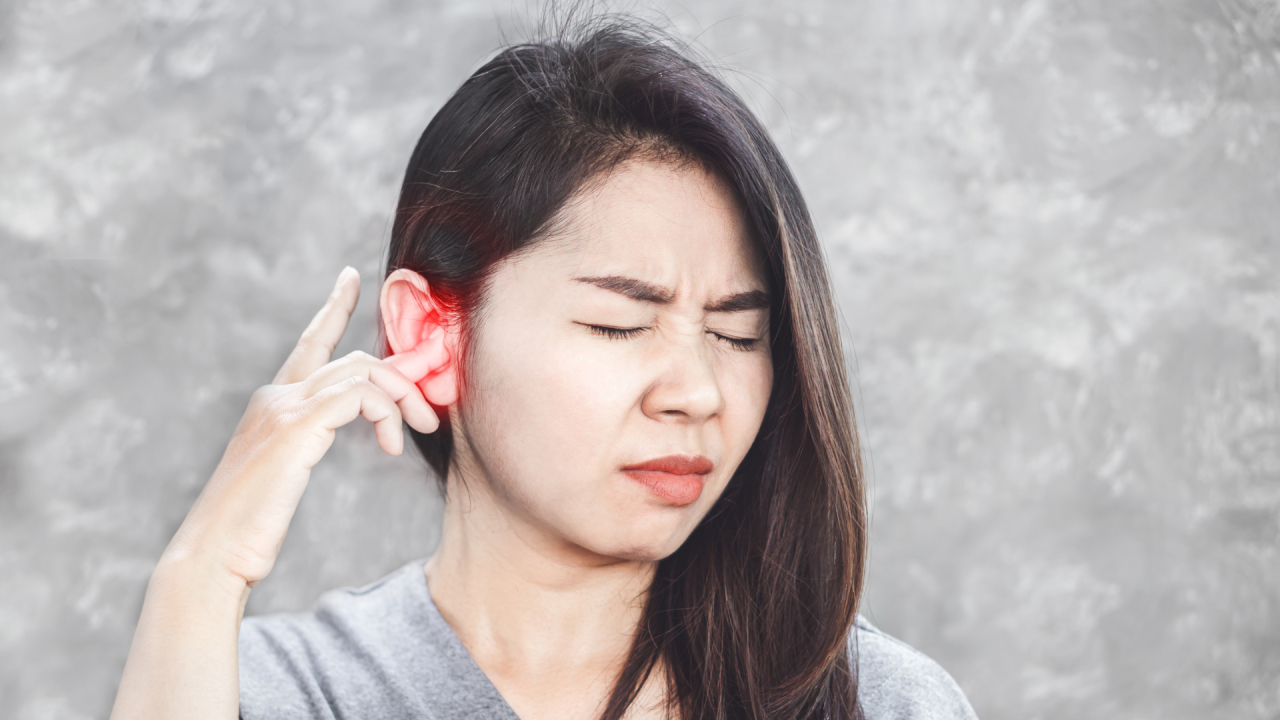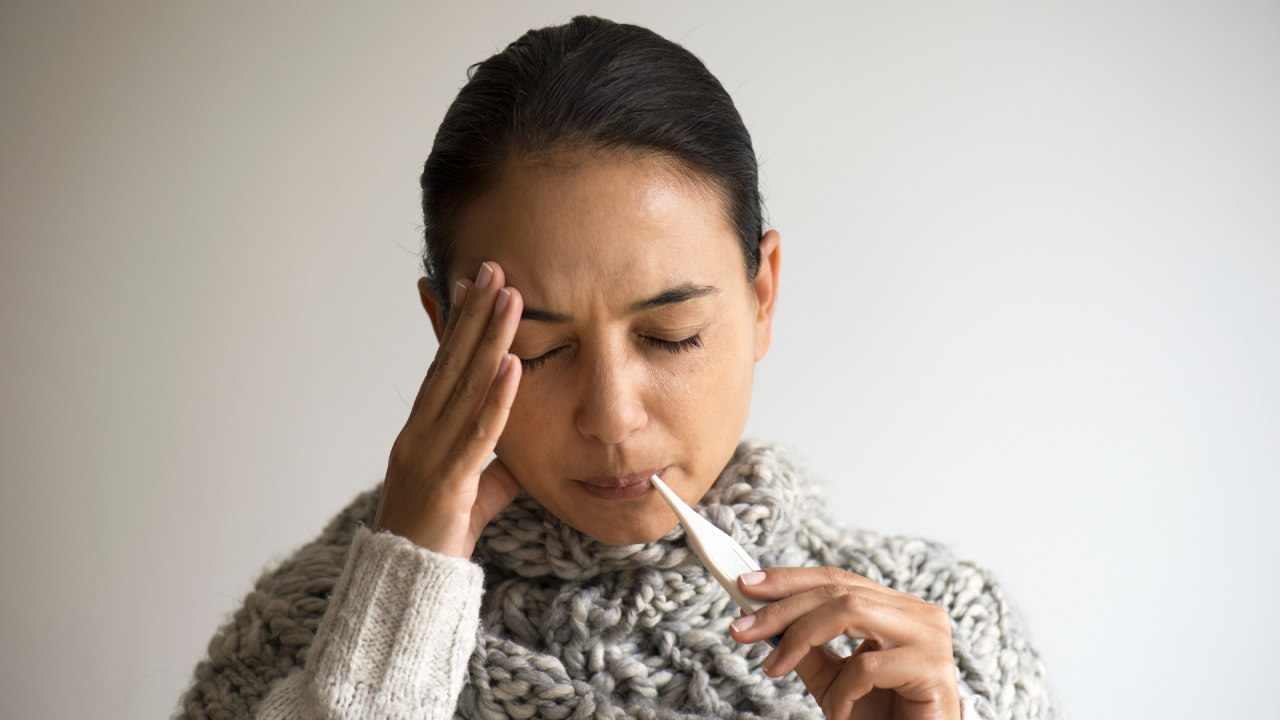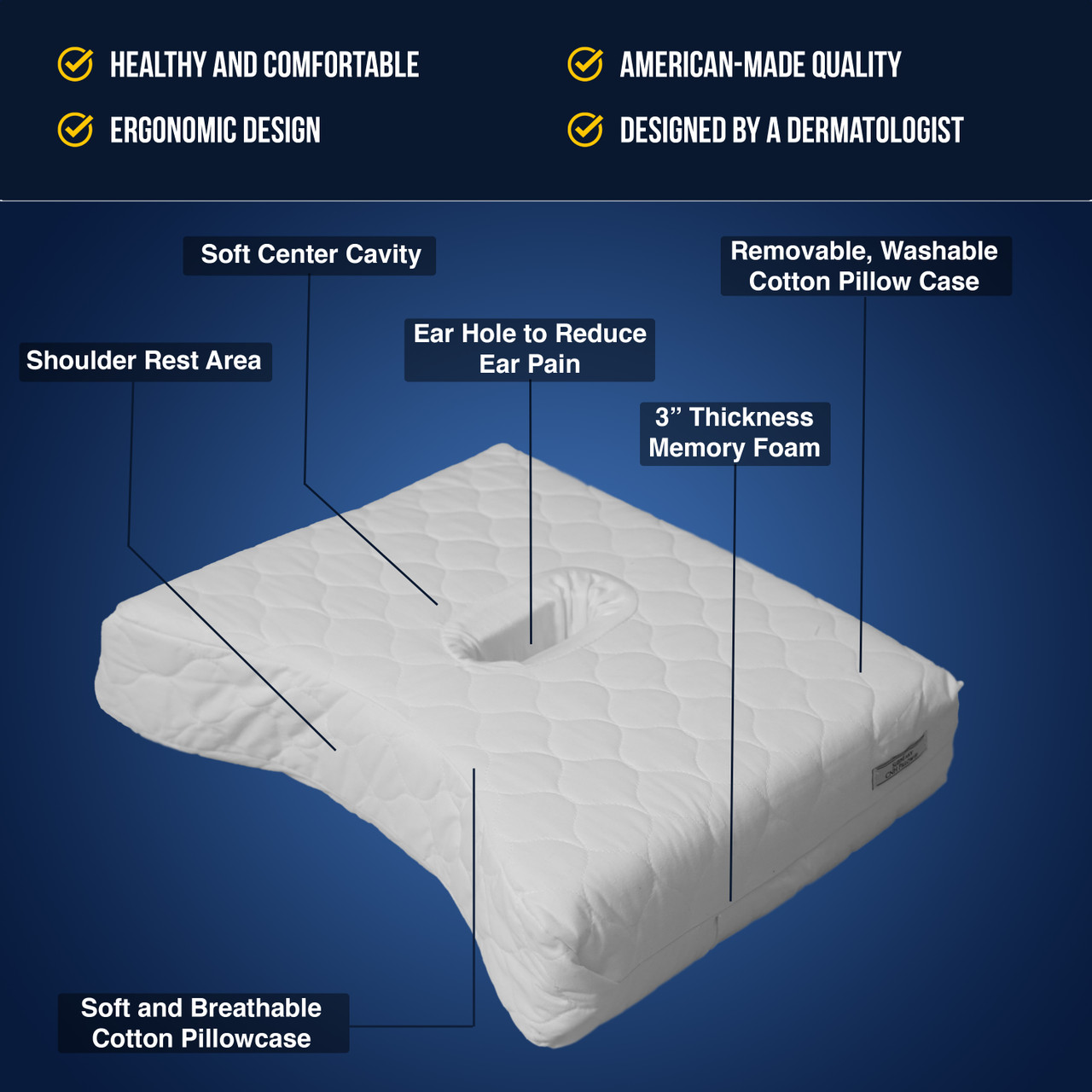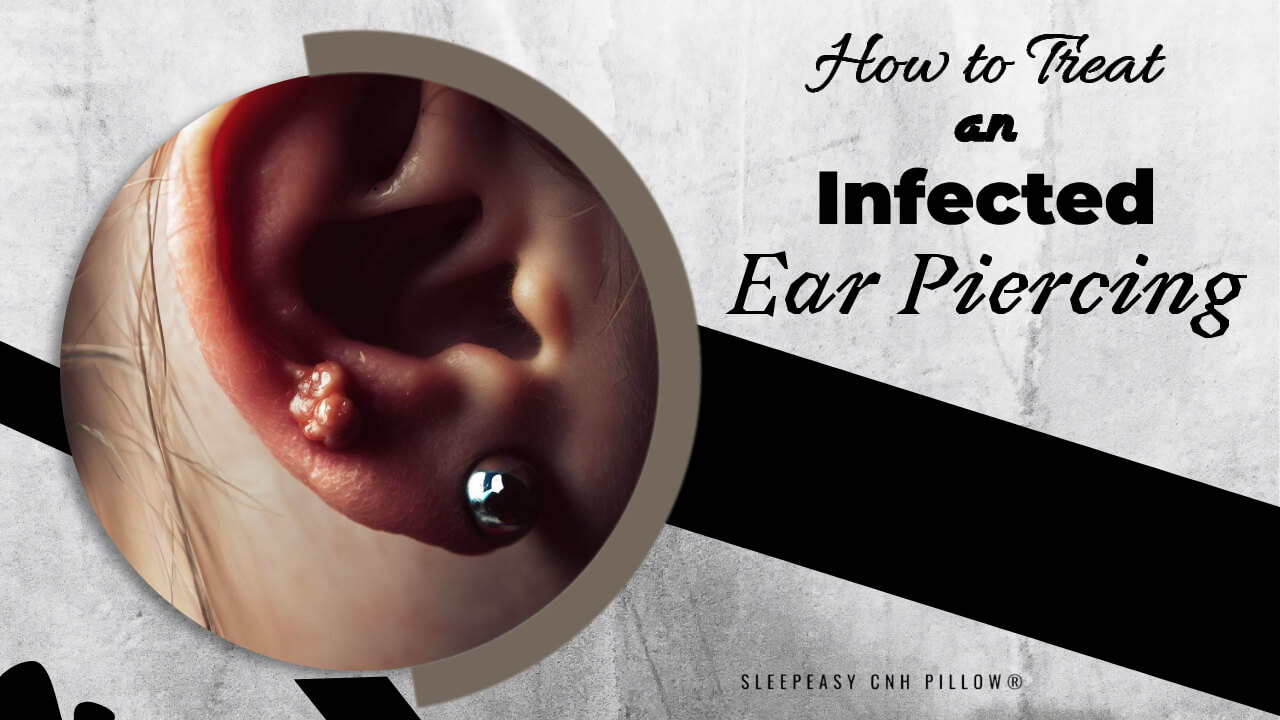Quick Tips to Treat Infected Piercings
Posted by Dr. Cannon on Dec 25th 2022
Keynotes
- Recognize Infections: Symptoms include redness, pain, swelling, and discharge.
- Home Care: Wash hands, clean with saltwater or antibacterial solutions, apply antibacterial cream. Use a pillow with a hole for better sleep.
- When to Seek Help: See a doctor if jewelry is stuck, there's fever with swelling and redness, or discharge is present. Immediate attention needed for systemic symptoms like fever and swollen lymph nodes.
- Kids' Care: Monitor for fever, spreading redness, and swelling. Seek medical attention if these symptoms appear.
Ear Piercings feel good and look fashionable. However, they need proper care to heal or you can develop an ear piercing infection.
Let’s see how to treat an infected ear piercing at home and when you should call your doctor.
Why do ear piercings get infections?
Ear piercings are open wounds. If a bacteria enters an open wound, it causes infection. Also, since we touch our face and ears frequently, we may get ear piercing infections when we touch our ears with dirty hands.
Caring for your ear piercings can be hard. Ears stay open most of the time and the germs and bacteria in the environment may infect our ears at any time.
If you follow some ear piercing care practices, you can avoid the pain and suffering of ear piercing.
How to know if your ear piercing has been infected?
Ear piercing infection symptoms are most obvious. Here are some symptoms you will see if you get ear piercing infection.
- Redness in the ear piercing area
- Pain
- Fever
- Fluid discharge from the ear piercing
- Swelling of the ear piercing area
- Ear piercings areas getting soft
Some symptoms may look similar to the ear piercing healing symptoms like pain or fever. However, if the pain or fever persists or other symptoms of the above list appear, consult your doctor.
The confirmed diagnosis of ear piercing infection rests with your doctor, please consult your doctor for a diagnosis.
Did you get ear piercing recently and it is hurting your sleep? Try our ear piercing pillow and get sound sleep with ear piercing.
Chances of Getting Affected by Ear Piercing Infection
A good number of the population gets piercings and a lot of people get ear piercings. However, only a small fraction of people getting ear piercings get an infection in their ear piercings. Here are the statistical results:
- Children: Approximately 20% of children with ear piercings experience infections.
- Teenagers: Around 15% of teenagers report ear piercing infections.
- Adults: About 10% of adults face ear piercing infections.
- Men: Roughly 8% of men get infected after ear piercings.
- Women: Approximately 12% of women experience ear piercing infections.
Citation: ( AAFP) (Cleveland Clinic)
The ear lobes are fatty and fleshy with generous blood flow. The earlobes heal quickly.
The earlobes heal quickly due to their blood flow, while cartilage, with less blood flow, takes longer to heal and is more prone to infection.
Types of ear piercing infections
Ear piercing infections can manifest in various forms. Common types include:
Localized Infection: Affects the immediate area around the piercing, causing redness, swelling, and tenderness.

Cellulitis: An infection spreading to surrounding tissues, leading to increased redness, warmth, and pain.

Abscess: Pus accumulation in a confined area, forming a painful lump near the piercing.

Keloid Formation: Excessive scar tissue growth, more common in individuals prone to keloids.

Systemic Infection: Rare but serious, with symptoms like fever, chills, and swollen lymph nodes. Seek immediate medical attention.

It's crucial to address infections promptly. Clean the area with saline solution and consult a healthcare professional if symptoms worsen or persist.
Pain Inside Ear or Headache Due to Piercing Infection
Infections from ear piercings can cause pain inside the ear or even headaches. This happens because the infection can spread, leading to inflammation and discomfort in surrounding areas. If you experience persistent pain or headaches, consult a healthcare professional for proper diagnosis and treatment.
What causes ear piercing infections?
These are some of the ways you may get ear piercing infection
- Touching your ear piercing with dirty, unwashed hands
- Use of unsterilized ear piercing equipment or getting your ear pierced in the unhygienic conditions
- Not keeping ear piercings all the time
- Not cleaning the ear piercings daily (dermatologists advise cleaning ear piercing twice a day)
- Bathing in open water like pool, tub, lake, etc. with ear piercing
How to treat infected ear piercings?
The first step in treating an ear piercing infection is not touching it without washing your hands. You can do basic ear piercing care at home without visiting your doctor.
Treating at home
Ear piercing infections are mostly mild and can be treated at home. Here is how you should take care of your ear at home for quick, painless healing.
- Wash your hands before you touch your ear piercings
- Clean your ear piercings with salt water or an anti-bacterial solution
- Dip cotton ball in the saltwater or antibacterial solution
- Dap ear piercings with the dipped cotton ball
- Tap dry your ear piercing with tissue or cotton ball
- Apply an antibacterial cream or ointment on ear piercing
- For adults, don't remove earrings in the first 6 weeks at least or the ear piercing hole may close
- Slight twist your earrings or ear jewelry to un-stuck it
If you take proper care, you will see notable healing only in 2 weeks.
Did you know? When you rest well, you recover better and your ear piercings heal quicker. Rest well and get good sleep with ear piercing pillow that creates a cushion between your ear and the bedding. Your ear doesn't touch the bedding or pillow and you get good sleep at night.
When to Seek Medical Attention?
You may need to call your doctor when:
- Stuck Jewelry: If your earring or jewelry is stuck and cannot be moved.
- Severe Symptoms: Swelling and redness accompanied by fever.
- Discharge: Presence of substance discharge from the piercing site.
Take a look at our detailed infographic on how you can take care of your ear piercing for quicker, painless healing.

Use SleepEasy Ear Pillow for Better Sleep with Ear Piercings
Sleeping with ear piercing can be hard. You can’t lay on your side for long and the pain wakes you up many times a night.
We have a solution.
Try this dermatologist-created ear piercing pillow that works like a charm for sleeping with ear piercing without pain.

The ear piercing pillow creates a cushion between your ear and the bedding. Your ear doesn’t touch the bedding directly. There is no pressure on your ear. And you get better sleep with ear piercing and you heal better when you rest better.

SleepEasy Pillow with a Hole in the Middle
Experience unparalleled comfort and relief from ear pain with our innovative pillow designed with a hole in the middle. SleepEasy Pillow with Hole in the Middle was conceived and designed by Dr. Cannon in the late 1980s. His source of inspiration was the plight of CNH patients who were side sleepers and couldn’t sleep well.
SleepEasy Pillow with a Hole in the Middle- 69.99
Buy NowEar Piercing Infection In Kids
Ear piercing in kids needs more attention on the parent's part.
Look for common ear piercing symptoms like fever, redness of the ear piercing area, swelling, and the redness is spreading.
For infants and toddlers, visit your doctor for any sign of the ear piercing infection.
The daily care instructions for ear piercings in kids include:
- Washing your hands or tell your kid to wash their hands with an antibacterial soap whenever you touch your kids' ears
- Clean the ear piercings twice a day
- Apply antibacterial ointment on the ear piercings
When should you call your doctor?
- When the redness is spreading beyond the ear piercing site
- When the kid has a fever
- The child looks very sick
- You think you need your kid to take to the doctor
Disclaimer
The information provided in this blog is intended for general informational purposes only and is not a substitute for professional medical advice, diagnosis, or treatment. Always seek the advice of your physician or other qualified health provider with any questions you may have regarding a medical condition or treatment.
Frequently Asked Questions
How do you know if your piercing is healing?
Ear piercing takes 6-9 weeks to heal. The healing symptoms are reduced ear piercing pain, no more fluid discharge, no more substance buildup, and no redness in the ear piercing area.
How to tell if the earlobe piercing is healed?
The signs of healing earlobe piercing are soft earlobe as you had before the piercing without any discharge of fluid, no pain, and no build-up on the earlobe piercing.
How to know when cartilage piercing is healed?
Ear cartilage piercings take longer to heal. Your ear cartilage piercing can take anywhere between 6-9 months to fully heal. You know your ear cartilage has healed when you have no pain, no discharge, no swelling or redness and no soreness.
How can I get good sleep with pierced ears?
Sleeping with ear piercings can be a challenge. When your ear gets pressed or squeezed, it causes pain and disrupts your sleep. We know that insufficient sleep can affect the immune system and it can slow ear piercing healing.
Try our piercing pillow and sleep well with ear piercing.
How to clean piercing with antibacterial soap?
Use mild antibacterial soap. Don't use antibacterial soaps with perfumes. You can also use liquid antibacterial soaps like Lever 2000. Clean your ear piercing with antibacterial soap in these steps.
- Make some foam with the soap on your hands.
- Apply the foam to your ear piercing.
- Leave it on for at least 15 seconds.
- Wash it with water.
- Tap dry with tissue or cotton.
How much salt to use to clean piercings?
For one cup of warm water, distilled or boiled, use 1/4th to 1/8th of a teaspoon of the sea salt. Don't add extra salt as it may cause irritation.
How to relieve itchy piercing?
Simply washing your ear piercing regularly with saline water or antibacterial soap solution, and applying antibacterial ointment or cream will alleviate the itchy piercing pain and discomfort.
How long for lobe piercings to heal?
Lobe piercings are the quickest to heal. On average, a lobe piercing will heal in 6-9 weeks considerably or completely within 3 months.
Disclaimer for CNH: This health information is for educational purposes only. You, the reader, assume full responsibility for how you choose to use it.
Will an infected ear piercing heal on its own?
An infection may not always resolve on its own. If you suspect an infection, clean the area with saline solution and see a healthcare professional if symptoms persist.
Should I take my earring out if it's infected?
Removing the earring can trap the infection. Clean the piercing with saline solution, and consult a professional for guidance on whether to remove the jewelry.
How do you treat an irritated piercing?
Clean the piercing with saline solution, avoid irritating substances, and ensure proper aftercare. If irritation persists, consult with your piercer or a healthcare professional.
How can I make my piercing heal faster?
Promote healing by maintaining good hygiene, cleaning with saline solution, avoiding trauma, and following proper aftercare instructions. Consult your piercer if you have concerns about healing progress.



